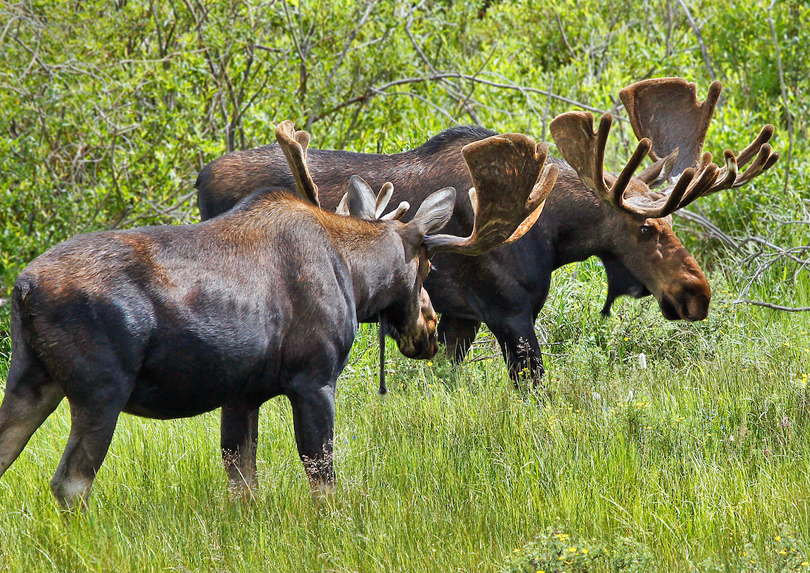Are There Moose in Colorado?
Yes, there are indeed moose in Colorado. These majestic creatures are part of the state’s rich biodiversity, roaming freely through its national forests, state parks, and wilderness areas. The presence of moose in Colorado is a testament to successful wildlife management and conservation efforts, allowing residents and visitors the chance to witness these magnificent animals in their natural habitat.
Colorado is home to a population of moose, and there are several areas where you have a good chance of spotting these majestic creatures.
The 7 Best Places To Seem Moose In Colorado:
- Brainard Lake Recreation Area: Located near Nederland in the Indian Peaks Wilderness, this area is known for its moose sightings. The Brainard Lake area offers beautiful scenery and ample opportunities to spot moose near the lake and in the surrounding meadows.
- Rocky Mountain National Park: The Kawuneeche Valley on the western side of Rocky Mountain National Park is a prime moose habitat. The Colorado River meanders through the valley, providing an ideal environment for moose sightings, especially during the early morning or late evening.
- State Forest State Park: Known as the “Moose Viewing Capital of Colorado,” State Forest State Park, near Walden, offers excellent opportunities to see moose throughout the year. The park is home to a significant moose population, and the North Park area is particularly known for moose sightings.
- Grand Mesa: The Grand Mesa National Forest, near Grand Junction, is another excellent location for moose viewing. The vast alpine meadows and wetlands on the Grand Mesa provide favorable conditions for moose to thrive.
- North Park and Walden Area: The town of Walden and the surrounding North Park region in northern Colorado are known for their moose populations. Keep an eye out along rivers, lakes, and meadows in this area.
- Vail Valley: The Vail Valley, including areas near Vail, Beaver Creek, and Edwards, is home to moose populations. You may find moose grazing in the marshy areas near water bodies.
- Steamboat Springs: The Steamboat Springs area in northwest Colorado is another location where moose can often be spotted. Routt National Forest and the surrounding wilderness areas provide good moose habitat.
Remember that moose are wild animals, and observing them should be done from a safe distance to avoid disturbing or stressing them. Keep in mind that wildlife sightings are not guaranteed, so patience and quiet observation are key when trying to spot moose in their natural habitat.
Additionally, moose are most active during the early morning and late afternoon hours, so those times offer better chances of seeing them.
Always respect wildlife and their environment while enjoying your time in Colorado’s beautiful outdoors.
Colorado, a state renowned for its breathtaking landscapes and abundant wildlife, offers a unique experience for nature enthusiasts and animal lovers alike. Among the diverse fauna that call Colorado home, the moose stands out as a symbol of the state’s wild and untouched nature. This blog post delves into the presence, population, and prime viewing spots of moose in Colorado, exploring the history of their reintroduction and their current status within this rugged terrain.
What Is the Moose Population in Colorado?
The moose population in Colorado has seen significant growth since their reintroduction in the late 20th century. From a few dozen initially introduced, the population has expanded to over 3,000 animals statewide. This growth is a positive indicator of the health of Colorado’s ecosystems, providing the necessary resources for the moose to thrive.
Were Moose Reintroduced to Colorado?
Yes, moose were reintroduced to Colorado. The state did not have a native moose population historically, and the presence of moose today is the result of careful wildlife management efforts. The initial reintroduction took place in the late 1970s and early 1980s, with moose being transplanted from Utah and Wyoming into Colorado’s North Park region. This effort aimed to enhance biodiversity and provide new wildlife viewing opportunities for the public. The success of the reintroduction program is evident in the thriving moose population that Colorado enjoys today.
